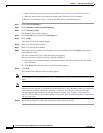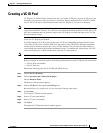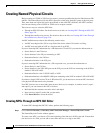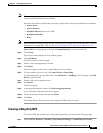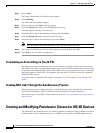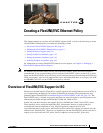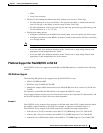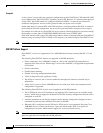
2-11
Cisco IP Solution Center L2VPN and Carrier Ethernet User Guide, 6.0
OL-21636-01
Chapter 2 Setting Up the ISC Services
Creating and Modifying Pseudowire Classes for IOS XR Devices
Note The pseudowire class feature is supported for IOS XR 3.6.1 and higher.
The pseudowire class feature supports configuration of the encapsulation, transport mode, fallback
options, and selection of a traffic engineering tunnel down which the pseudowire can be directed. For
tunnel selection, you can select the tunnel using the ISC Traffic Engineering Management (TEM)
application, if it is being used. Otherwise, you can specify the identifier of a tunnel that is already
provisioned within the network. For IOS XR-capable devices, the pseudowire class is a separately
defined object in the ISC repository, which can be attached to an L2VPN service policy or service
request. The pseudowire class feature is only available for use in L2VPN ERS, EWS and ATM policies
and service requests.
This section describes how to create and modify pseudowire classes. For information on how the
pseudowire class is associated to a L2VPN policy and used within a service request, see
Chapter 7,
“Creating an L2VPN Policy” and Chapter 8, “Managing an L2VPN Service Request.”
Creating a Pseudowire Class
To create a pseudowire class, perform the following steps.
Step 1 Navigate to Service Inventory > Inventory and Connection Manager.
Step 2 Click the PseudoWireClass icon.
The Pseudowire Classes window appears.
Step 3 Click the Create button.
The Create PseudowireClass window appears, as shown in Figure 2-1.
Figure 2-1 Create PseudoWireClass Window
Step 4 In the Name field, enter a valid PseudoWireClass name.
The pseudowire class name is used for provisioning pw-class commands on the XR device. The name
should not exceed 32 characters and should not contain spaces.






